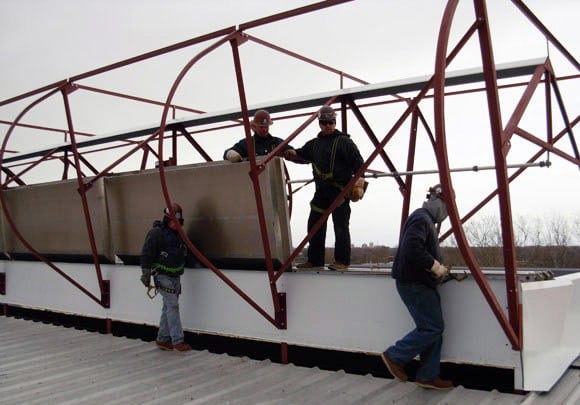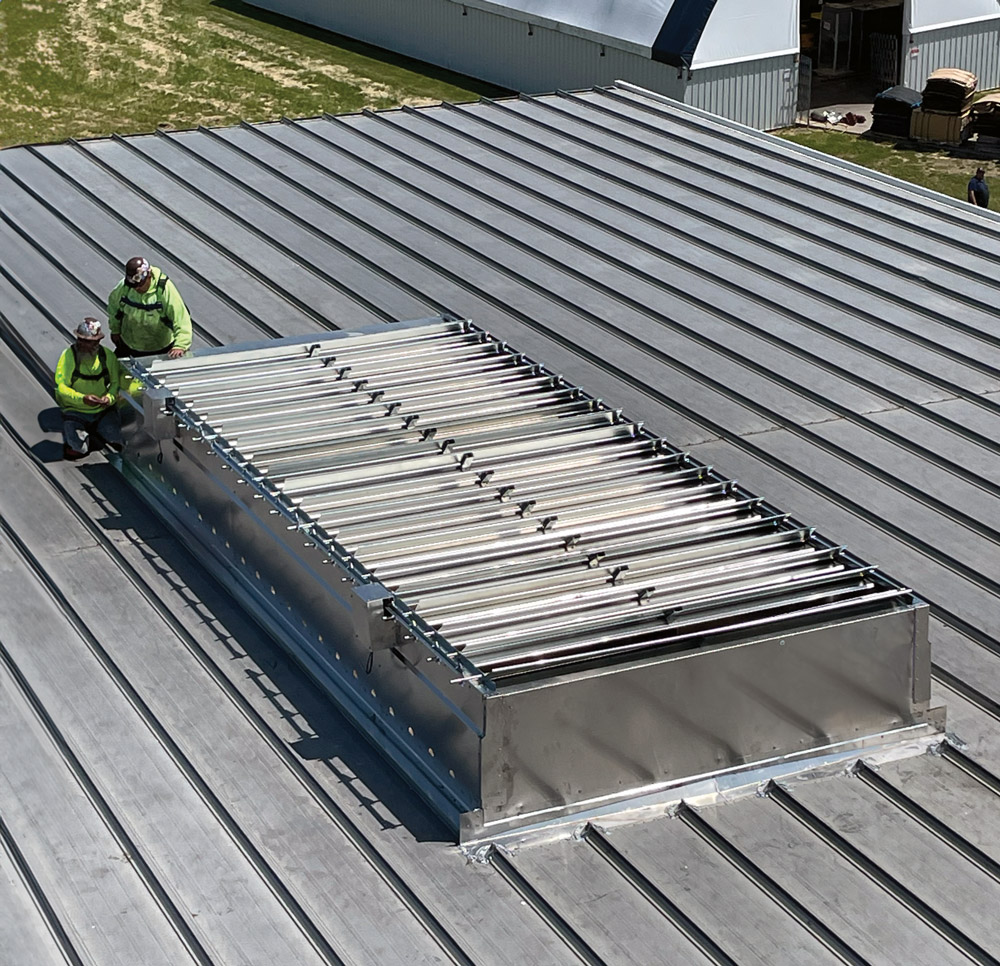Year Round Ventilation
At Moffitt, we’ve been helping customers decrease temperatures with year round ventilation for over sixty years. Whether it’s fans, evaporative cooling, or natural ventilators, we can help you find the solution for high temperatures, humidity build-up, and hazy conditions through all seasons.
How Does Year Round Ventilation Work?
The benefits of a natural ventilation are easiest to see during the hot summer months. However, did you know that a natural ventilation system can actually help your building all year round?
Vent dampers are one of the keys to winterizing a natural ventilator. They close to keep the warm air from escaping during the colder months. Keeping the warm air produced by the process inside helps keep the space warm during the winter. Additionally, the dampers can be designed to close part-way to allow some air to still vent as needed. Finally, dampers can be integrated into a larger building system to ensure that they work in conjunction with wall louvers, fans, and make-up air units.
MoffittVent

The MoffittVent natural ventilator is a large single unit placed on the top of the building’s roof. Wind blowing across the top of the ventilator pulls the warm air out of the building. This keeps the air moving and the interior cool.
Dampers for these large ventilators have been greatly improved over the last several years. The whole system has been changed to make the damper smaller, lighter, and easier to open/close. Additionally, the new style makes them more durable and reliable. Finally, pull-chains and remote controls allow for easier opening and closing without requring anyone climb on the roof to change the damper position. The MoffittVent is ideal for large facilities with long metal roofs.
MatrixVent

The MatrixVent low-profile natural ventilation is smaller and lighter than the MoffittVent. This makes it easier retrofit installation without any additional support steel. Standing only about two feet tall, the MatrixVent has a lighter wind load as well. Furthermore, the low profile has a minimal impact on the architectural and aesthetic properties of the building.
Like a MoffittVent the MatrixVent can be fitted with a damper to close the airflow during the winter. Like the MatrixVent itself, the damper is lightweight and durable. It can be closed easily to block off the escape of hot air when you want to keep it in the building.
Air Turnover Unit
Though stifling in the summer, this hot air can be helpful during the winter. Natural ventilator dampers help provide year round ventilation by cutting off the air exhaust during the cold winter months. This allows the building to retain the hot air instead of exhausting it. An air turnover unit can even be added to draw this hot air back down to the floor level. Recirculating the warm air helps provide better year round ventilation.
How Much Does It Cost?
Facility owners’ biggest concern is always cost. Each situation is different, but Moffitt offers free no obligation ventilation design. Whether your concern is venting hot air during the summer or keeping a building warm during the winter, Moffitt can help. Contact Moffitt today to begin the quote process for your new year round ventilation solution.
